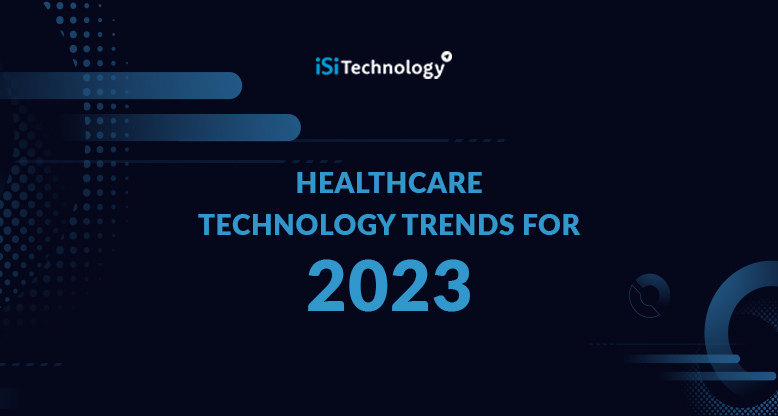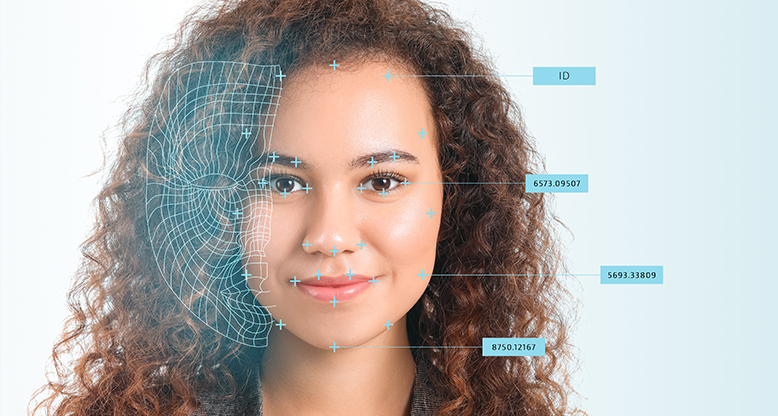Healthcare Technology Trends for 2023

The pandemic led to many changes in how people approached their health. Medical institutions also explored new ways to deal with patient care and safety.
The healthcare industry is leveraging more and more technology to transform all processes, from reactionary care to prevention. With so many developments, 2023 is looking to be a year of change.
New healthcare solutions and technologies are on the rise. The internet, biomedical engineering technology, and artificial intelligence are set to transform medicine today and well into the future.
Here are the top trends in healthcare that will be more prominent next year.
Artificial Intelligence and Machine Learning Use in Healthcare
Artificial intelligence (AI) and machine learning (ML) are two technological trends in healthcare that help physicians in diagnosis and monitoring. Because of these technologies, health prediction has become more accurate and patient treatment more manageable.
Clinicians can easily track their patient’s health which makes personalized care possible. AI and ML are used for forecasts and trends to enhance diagnosis and treatment.
Healthcare facilities are now exploring predictive analytics to increase the accuracy of remote diagnosis. The use of AI and ML in medical teletech services is only growing. For example, the forecast for the global AI market reached $11 billion in 2021. It is expected to grow by 37% by 2030.
AI is also used in the following:
- Medical image analysis – Medical imagery such as X-ray and MRI scans uses AI software to detect cancer, tumors, and fractures.
- Drug discovery – AI and ML can accelerate research and drug discovery. Researchers can determine which drug combinations would be better to combat certain diseases.
- Preventive medicine – Doctors can use AI to forecast a patient’s health. For example, certain data points can predict when a patient will likely experience a heart attack or stroke. Medication and treatments can be adjusted accordingly.
Increased Use of the Cloud
More companies and healthcare facilities are uploading data to the cloud. Hospitals, non-emergency medical transport providers, and medical billing services use it to store data and documentation. Companies like ISI Technology leverage the cloud for real-time tracking and billing documentation.
Cloud-based solutions are very popular because of easy access and flexibility. However, security remains a constant concern. Healthcare facilities must prevent data leaks and online threats with robust encryptions and security systems. Replicating data in backup storage ensures that nothing will be lost.
Experts suggest that more companies across all industries will only use cloud-based solutions even more in 2023. This is mainly due to the prevalence of remote and hybrid work systems.
The Internet of Medical Things (IoMT) Will Transform Medicine

IoMT devices connect patients and physicians, providing real-time data on their condition. These medical devices include medical records, linking past doctors and hospitals, and tracking behavior.
This technology trend in healthcare helps clinicians provide improved patient care with updated medical information. It connects manufacturers and suppliers with health technology providers, thus helping doctors give patients the best treatment possible.
IoMT has paved the growth of many digital health products. These include apps for heart monitoring, health alert, and fitness and health. Medical device technology trends take an important part in overall healthcare industry development. Medical device manufacturers keep improving existing wearables and creating new ones, medical device industry is booming.
IoMT is expected to expand to the following in 2023:
- In-home patient monitoring – IoMT can help doctors monitor patients who cannot go to healthcare facilities for any reason. This is especially helpful for the elderly and those who risk their health if they leave the house.
- Wearable devices – Smart clothing and wearable devices can track a patient’s glucose levels, heart rate, calorie consumption, and many other health metrics. Patients can then study this data and make smarter choices. They can also relay the information to their physician, who provides better treatment and more informed advice for their health.
- IoMT connectivity in healthcare facilities – Clinics are now hooking up smart scales and patient-monitoring systems to IoMT. It allows people to consult with their doctors through telemedicine, video, and other smart devices.
Data Sharing and Interoperability Among Healthcare Organizations
Each healthcare provider maintains its own database, but in 2023, interoperability can lead to a universal database. This creates a comprehensive picture of a patient’s medical history. It can provide an accurate diagnosis and several treatment options.
Patients and healthcare providers will have timely and secure access to medical information. They can integrate electronic medical data to improve patient care and develop treatment plans.
Many governments are encouraging medical and health facilities to maintain a central record system. The European Union (EU) is mandating interoperability for such facilities. They include enhanced data protection to maintain security.
Developing countries in Asia and Africa can leverage interoperability to create health policies and improve health management.
Data Breach Prevention
With the rise of IoMT and digitization, data breaches also rose significantly. The pandemic only increased such violations, with its peak between 2020 and 2021.
Cybersecurity and data breach prevention are crucial for healthcare organizations. Governments are expected to mandate the following practices:
- Annual cybersecurity checks to ensure that HIPAA compliance is followed
- Third-party partners for tech maintenance or third-party security projects
- Staff training on data security, best practices, and data risks
- IT infrastructure with high levels of hardware and software protection
Facial Recognition

One of the most popular ways to provide access to handheld devices and medical stations is facial recognition technology. But the pandemic made it a challenge because of mask use. A new trend in healthcare technology – deep-learning facial algorithms are making it possible.
Medical and healthcare facilities are exploring this technology to increase security and control facility and data access.
Smart Technology and Implants
The healthcare industry is now opening the market for smart implant technology. It improves patient rehabilitation and regenerative medicine.
The use of 3D printing technology makes implants accessible to patients. New, lighter materials make prosthetics lightweight and flexible.
These technologies have many benefits:
- Customizable prostheses for all parts of the body
- Personalized design and fit for medical devices and instruments
- A new generation of implant engineering and materials
- Reduction in the cost of prostheses and implants
- Expansion of 3D printing for other medical needs, such as heart and brain implants
Healthcare Software Will Grow
The demand for healthcare software will expand even more in 2023 and improve patient outcomes. Healthcare software is now a vital part of a healthy lifestyle. Developers will focus not only on improving medical devices but also on diagnostic tools.
The pandemic has made health a prime concern. Easy access to care is more valuable than ever. Healthcare software programs need to meet these needs in the following areas:
- Patient portals
- Telehealth
- Hospital management
- Patient monitoring
- Medical billing and invoicing
- Medical diagnosis
- Non-emergency medical transport (NEMT) software
IoT devices and mobile phones will increase the demand for healthcare software. Having 24-hour access to the internet and 5G will make healthcare software more accessible. Medical device trends are on the rise
Companies like ISI Technology will market and update their software to encourage more people to access these technologies.
Nanomedicine
In 2023, the use of nanoscale materials is expected to rise. Biocompatible nanoparticles and nanoelectronic devices have different medical purposes. They have also been used in research and diagnosis of disease.
This technology is now in use to study diseases on a cellular level. This includes cancer and auto-immune diseases. Self-replicating bots are also used in research, and 2023 promises more leaps in nanomedicine.
Virtual Reality and Augmented Reality
Many healthcare providers are exploring computer-generated reality to improve diagnosis and treatment. Virtual reality (VR) is helping medical students develop their skills. Augmented reality (AR) is helping therapy patients move in space even if they are at home.
The technology is even more powerful in mixed reality when digital objects are placed in real-life environments. This allows healthcare workers, students, and trainees to interact with those objects. They can practice their skills in any part of the facility. They can interact with patients, practice their skills, and go through the hospital without leaving their homes.
Using VR and AR also opens the doors for creating virtual copies of real-life objects. This digital twin technology allows objects to be tested in an environment that simulates real life.
This is useful for testing medical devices, prostheses, and other medical tools. Digital twins also make prototyping easier and cheaper. Labs don’t have to create full-scale prototypes anymore. Engineers can use accurate virtual twins of the gadget and test it virtually.
2023 Opens New Doors for Health and Medical Technology
The healthcare and medical industry will continue to grow in the following year and beyond. The pandemic has boosted the growth of research and technology in many areas.
It has also made the demand for digital tools that patients and doctors can use remotely. But economic and global issues will affect how these healthcare and medtech trends catch on.
Many European countries rely a lot on supply chains from russia and a transportation corridor through Ukraine. China is still struggling with new variants of COVID-19. The United States and the United Kingdom are struggling with inflation and global shortages.
But no matter what happens, 2023 is a promising year for health and medical technology and research.